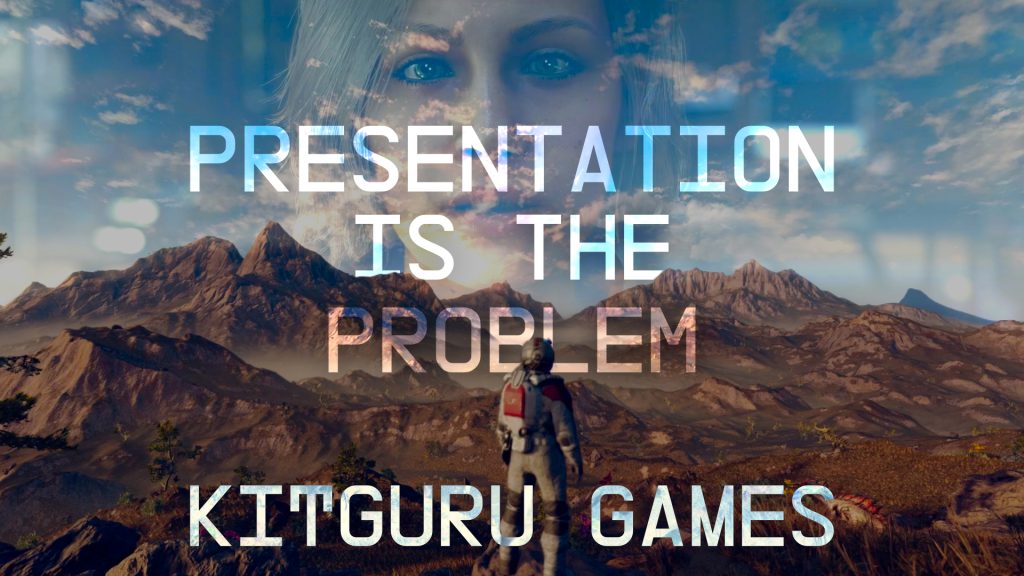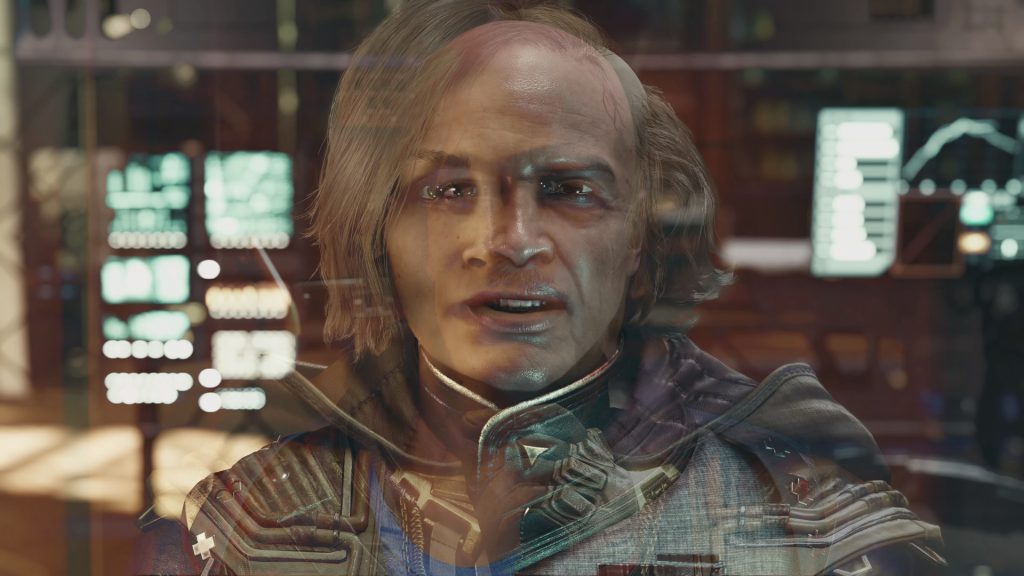We have a rare difference of opinion at KitGuru this week. While Matt has loved Starfield from start to finish, Mustafa is less impressed. In today's KitGuru Games, Mustafa offers his critique of Starfield and its space-exploration offering.
When Todd Howard walked on stage during E3 2018 all those years ago and promised to show us a brand new space sci-fi adventure 25 years in the making, I – like many others – had one thought in my mind “this is No Man’s Skyrim but (hopefully) good”. Many of us were still burned at the time by the launch of Hello Hames’ far too overhyped indie experience, claiming to present us with 18 quintillion planets, all explorable from top to bottom – each telling a unique story.
Now, all these years later No Man's Sky has been transformed into one of the most impressive redemption stories in the entire industry, with Sean Murray and the team having worked tirelessly to match and eventually even exceed initial expectations. That said, even the launch version of No Man's Sky got at least one thing right. It was a core dedication to this singular aspect which made NMS such an exciting prospect – and why its initial lack of content was disappointing. Even so, after a quarter of a century in conception, Bethesda Game Studios' Starfield is here, but unfortunately in my opinion it misses the mark in the most important aspect for a space-exploring experience – that being the one thing which Hello Games managed to get right from the off: Presentation.
What do I mean by this? Well, one needs to look no further than the very initial splash screen of No Man's Sky to understand how Hello Games' emphasis and importance placed upon the concept of presentation helped make what I deem to be the ultimate space exploration experience. Before you even press the start button players are presented with the infinite vastness of space, showcasing a ‘starfield' of near limitless possibilities. Upon pressing start, the game's loading screen is masked by a dolly zoom through the universe and it's countless stars, some of which have weird and unfamiliar names placed upon them; moving too fast for you to absorb the details, but just slow enough to let you understand that these are all places which you may or may not come across during your travels. Additionally during this interim loading period, players are actually already given control, with you able to subtly look left, right, up and down using the camera – almost as if you were a passenger aboard a ship, looking outside the window as it careens through space. The game hasn't even started yet, but already you are actively exploring space thanks to the careful considerations made by Hello Games to ensure an immersive experience.
This presentation, this sense of complete and utter immersion is only further enhanced once you actually start playing the game itself. Pretty much any and all actions are presented in a seamless manner with all transitory elements being dynamic in their execution. Of course, there's the general land traversal which uses on-the-fly loading to allow you to unendingly explore each planet's surface with no barriers nor any limitations. Furthermore, your inventory and other menu-based UI elements are overlaid on top of the viewable world itself, no matter whether in 1st or 3rd person meaning you remain grounded within the world surrounding you at all times.
This seamless approach is not limited just to the ground level, but all aspects of traversal. Entering your ship is presented in a quick and fluid motion, not giving you enough time to realise during the half a second long animation that you aren't directly controlling your character. Once in the ship you immediately regain control, allowing you to fly the vessel wherever you please and at whatever speed you wish. Taking off; landing; speeding up; slowing down – all is in your direct control. Even engaging hyperspeed in order to warp to different solar systems (which requires a loading period) is masked with similar tricks used during the introduction; letting you control where your character looks to some degree while also using certain UI overlays to make the journey feel more in-the-moment and dynamic.
Speaking to NPCs uses familiar swoops and pans to position the camera in a UX friendly way, while doing so dynamically as to not make the moment feel jarring or disconnected from the rest of the world. I could go on and on listing every which way that Hello Games designed No Man's Sky to make for an uninterrupted experience. For a space exploration game, in my opinion this factor trumps all else. Even when No Man's sky launched to great disappointment in 2016 and planets were relatively barren with little to do or find, it felt real; it felt immersive – and as someone who will never go to space in real life due to being born at the wrong time in history, Hello Games succeeded in giving me the next best thing. No Man's Sky is truly a seamless experience in the most literal sense of the word, and with seamlessness comes immersion. This is where Starfield fails badly in my opinion.
First things first, I'm not trying to besmirch Starfield or Bethesda Games Studios, nor am I saying that No Man's Sky is an overall better game, but there is a clear disparity between the two titles when it comes to presentation. I'm a huge fan of many of BGS' prior titles. Fallout 3 served as my introduction to that franchise, quickly becoming one of my favourite games atmosphere-wise. The alternate history post apocalyptic Americana vibes just hit right. Fallout 4 was a day-one purchase for me, even going so far as to attend a midnight release at my local Game shop (while wearing a homemade vault-dweller cosplay).
The BGS formula is one I very much enjoy and will likely continue to enjoy going forward. All this is to say that what I'm presenting here isn't a Starfield hit-piece targeted at hating the new popular kid in town. However, I do believe that the way in which you go about traversing the universe in Starfield fails to capture the imagination due to the way it is presented. Okay, let's get into it.
My primary issue with Starfield is its disjointedness in pretty much all interactions, be it with the world; your character; inventory; NPCs and of course space travel. As mentioned earlier, No Man's Sky isn't entirely free from loading screens nor does it eschew moments in which control is taken away from the player. That being said, Hello Games managed to successfully mask those moments in a number of intelligent ways. Starfield on the other hand presents a universe which is full of separate pocketed moments – which is totally fine – but fails to integrate all these individual instances in a seamless manner.
Entering your ship is met with a pitch black loading screen. Admittedly, it lasts for about a second, but during that moment you are taken out of the experience. Leaving the planet is met with yet another short loading screen, followed by a canned animation of your spaceship taking off from a perspective external of the shuttle itself. I played Starfield entirely in first person and yet so many moments force you away from being in the eyes of your character in lieu of a static cinematic. After taking off you then load into space, with no real sense of where you are positionally or how you travelled from the planet.
Upon regaining control of your character you can fly about if you want but there's not much point in doing so. In wanting to land on a separate planet to continue operations, you click on the objective marker which then pops up another black loading screen followed by yet another canned animation of your ship just about landing on the docking station viewed from the outside. You then regain control of your character, walk to the ladder, engage in another black loading screen and set foot on the surface.
This entire song and dance fails to feel like I am truly traversing space at any point. There is no sense of scale nor time – which in my opinion are two of the core identities of space travel. Space is Infinitely vast, yet none of this is properly presented to the player. It doesn't stop there however. After landing on New Atlantis and exiting my ship, I then walk a few steps forward towards one of the NPCs to continue the mission at hand. Bethesda's games have never been the best when it comes to NPC interactions. After experimenting with a slightly more dynamic camera in Fallout 4, BGS decided to revert back to their old method of having a talking head statically stand in front of you – forcing a first person-like perspective. This in and of itself is not a big deal (especially as I was playing in first-person) however in trying to inject some of that Fallout 4 personality into these moments, they ironically made a system even worse than that seen in the likes of Fallout 3.
When there is more than one person engaged in the conversation (be it due to quips by your companion or other characters chiming in), the camera will constantly switch back and forth between these talking heads. The main problem here however is the fact that there is zero sense of location or respective placement between all those involved. Despite being in wholly different locations relative to your character, each time someone talks it is presented as though they are directly in front of you. So even though it is all in first person, it doesn't feel as though your character is actually there. Instead, no matter who is talking or where they are talking from, the camera shows off a flat, from-the-shoulder-up portrait at an equidistant perspective, as if it is being shot like a show or film – except with zero sense of cinematography whatsoever.
This back and forth disjointed representation of these interactions not only looks bad, but is actively confusing. Older BGS games may have been equally as awkward in their presentation of conversations, but at the very least the camera seemed to be somewhat grounded to your character. This new method of conversational presentation is an active regression from both Fallout 4's 3rd-person conversations and earlier entries' first-person interactions – somehow being the worst of both worlds.
When considering the fact that traveling through space and talking to people comprises 2/3rds of the entire Starfield experience, these small yet significant hiccups in motion and flow are more than simple nit-picks. While I understand that for some, all which I have presented here could be a non-issue, to me, these are highly egregious dealbreakers. As mentioned, I have thoroughly enjoyed most if not all of Bethesda Game Studios' prior titles and not once did I think about these games' abundant use of loading screens (except maybe for Skyrim – though I did admittedly enjoy twirling around the various vases and weapons displayed during them).
The difference between BGS' prior games and Starfield however is the reality of the scope of the games, and the fact that Starfield is intended to be a galaxy-hopping space adventure. What's the use of 1000 planets if they are segmented in such a way as to make the sense of scale impossible to gauge? Ironically, walking across the wastelands of Fallout or the mountains of Skyrim felt much more like an actual journey. Again, I want to reiterate that my issue comes not from the number of loading screens but the fact that nothing is done with these to ease the (many) moments in which they occur.
One of the most disappointing parts of all this is that BGS do know how to inject some personality into moments in which control is wrangled away from players. When inside your ship, if you go to the pilot's seat to begin take-off, your character will take a moment to actually sit down, adjust themselves and bring the monitor closer to themselves. It's a short but significant moment which allows you to feel more connected with the world, giving your ship a greater sense of groundedness and making it feel more real. Yes, this animation is always played in the 3rd-person, but even so the considerations and choices made during this moment helped keep me in the experience. If Starfield took the same approach with the rest of the game as they did with that one example then many of my issues with the game would have been alleviated.
As it stands, to me Starfield feels unfinished. All the main elements are there, but they are segregated in a way which fails to make any interactions feel like much more than micro-instances of pocketed gameplay. My issues with Starfield are entirely in its presentation – and I haven't been able to look past it. The very first gameplay reveal trailer for Starfield began with a quote: “The wonder is, not that the field of stars is so vast, but that man has measured it”. Because of the way travel is presented in Starfield however, it is unfortunately impossible to measure.
Discuss on our Facebook page HERE.
KitGuru says: Have you been enjoying Starfield? Has the game's presentation bothered you? Is immersion important to you for a space exploration game? Let us know down below.
 KitGuru KitGuru.net – Tech News | Hardware News | Hardware Reviews | IOS | Mobile | Gaming | Graphics Cards
KitGuru KitGuru.net – Tech News | Hardware News | Hardware Reviews | IOS | Mobile | Gaming | Graphics Cards




